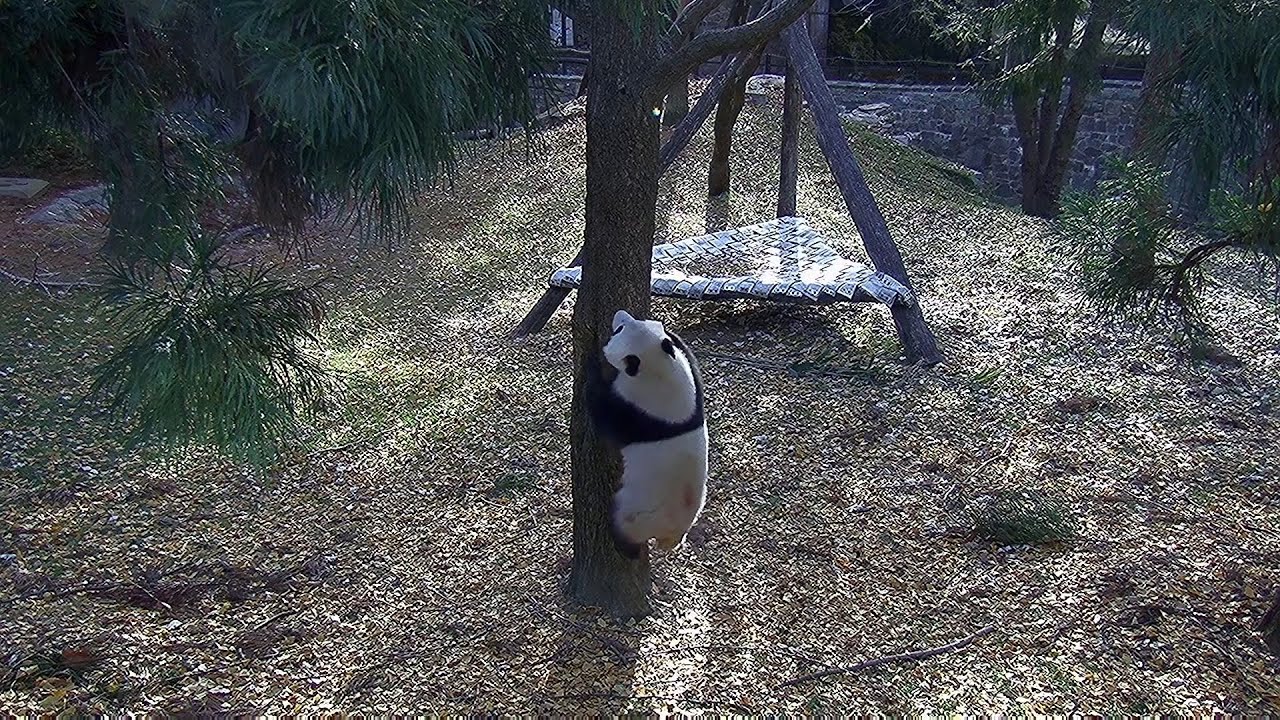- The natural behaviors and instincts of pandas observed in the video “DCPandas: Qing Bao Climbs a Tree.”
- Insights into panda conservation efforts and the role of zoos in preserving endangered species.
- The significance of habitat simulation and enrichment activities in zoo management.
- The challenges and strategies involved in ensuring pandas’ well-being in captivity.
- The educational impact of such wildlife videos on public awareness and conservation advocacy.
In “DCPandas: Qing Bao Climbs a Tree,” viewers witness the fascinating natural behavior of pandas, specifically the climbing instincts of Qing Bao, a panda residing in the Smithsonian’s National Zoological Park. This engaging footage provides an opportunity to delve into the intricacies of panda behavior, conservation efforts, and the broader context of wildlife education and advocacy. By examining these elements, enthusiasts and conservationists gain an enriched perspective on the complexities of housing and preserving this endangered species.
Pandas, known scientifically as Ailuropoda melanoleuca, are native to the mountainous regions of southwestern China. These animals are primarily solitary in the wild and are iconic for their distinctive black-and-white fur and their dependence on bamboo as a primary food source. Despite their cuddly appearance, pandas are capable climbers, as demonstrated by Qing Bao. Climbing serves various purposes, such as escape from threats, access to food, and play—a crucial aspect of their natural behavior.
The panda Qing Bao’s ascent is not just an exhibition of agility; it underscores the important role climbing plays in a panda’s daily life. In the wild, pandas encounter diverse terrains where climbing is essential for survival and social interaction. By observing Qing Bao, researchers and the public can better understand how these natural activities contribute to physical health and mental stimulation.
As panda populations dwindle due to habitat loss and fragmentation, conservation becomes imperative. Zoos around the globe participate in conservation programs aimed at safeguarding the future of pandas. These initiatives often involve breeding programs, habitat preservation efforts, and public education campaigns, all of which are vital for increasing panda numbers and ensuring genetic diversity.
In captivity, zoos like the Smithsonian National Zoo strive to mirror pandas’ natural habitats to foster behaviors typical in the wild. Environments are curated meticulously to encourage exercise and engagement. Enrichment activities, such as offering climbing structures, toys, and puzzle feeders, cater to the animal’s instincts and help mitigate stress by providing them outlets for natural behaviors.
Zoo management faces numerous challenges in maintaining pandas in captivity. Providing an environment that mimics their natural habitat is complex, given the panda’s specialized dietary requirements and vast roaming needs. As pandas feed almost exclusively on bamboo, zoos must source large quantities of this resource to meet their dietary demands. Additionally, health issues such as dental problems, obesity, and fertility complications are common and necessitate specialized veterinary care.
Through the lens of “DCPandas: Qing Bao Climbs a Tree,” one can appreciate the profound impact such content has on public awareness regarding conservation efforts. Videos showcasing natural behaviors captivate audiences, leading to increased interest in wildlife preservation. This digital engagement becomes a powerful tool for advocating conservation initiatives, encouraging people to support zoos and wildlife organizations devoted to protecting endangered species.
Educational programs harnessing these videos as resource materials further solidify public understanding of panda biology and ecology. Engaging with these insights fosters a sense of responsibility in viewers, prompting them to act in conservation-friendly ways, such as reducing carbon footprints and supporting eco-friendly policies.
Ultimately, the video of Qing Bao climbing serves as an essential educational resource, inspiring individuals to acknowledge and support the rigorous conservation work necessary to ensure the survival of pandas. Through the collaboration of zoological parks, conservation organizations, and the public, the future of pandas can be safeguarded. Understanding the behaviors, challenges, and strategies involved allows a deeper appreciation for these beloved creatures and the diligent efforts to ensure their continuity in the wild and captivity.
*****
Source Description
🐼🌳 Qing Bao is putting her climbing skills to the test in the treetop! From trees and wooden structures to rockwork and hammocks, there’s no shortage of interesting places for our giant pandas to explore. Providing Qing Bao and Bao Li with an outlet to exercise their natural climbing behaviors is one way our team helps the bear pair settle into their new home.
. . .
🐾 Follow #DCPandas for updates, and meet Qing Bao and Bao Li when they make their giant debut Jan. 24, 2025. nationalzoo.si.edu/dcpandas.


